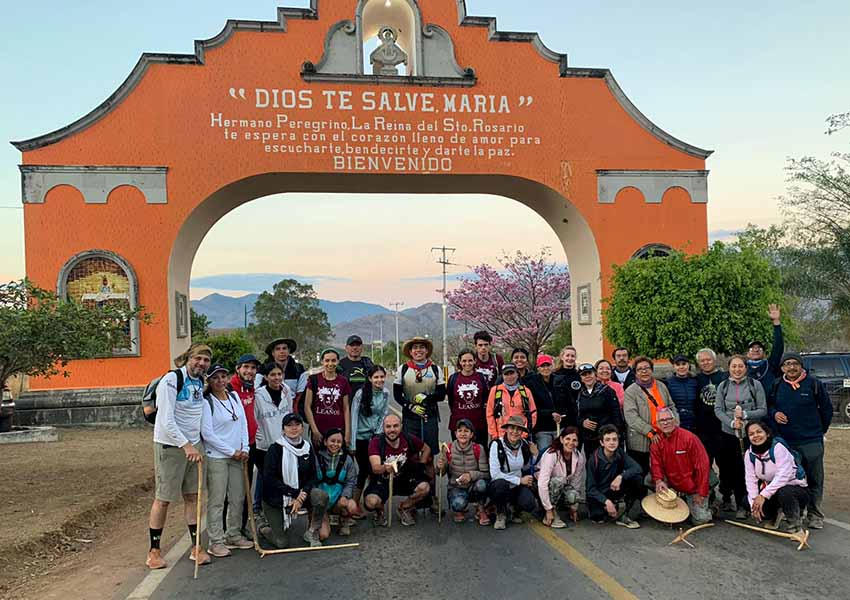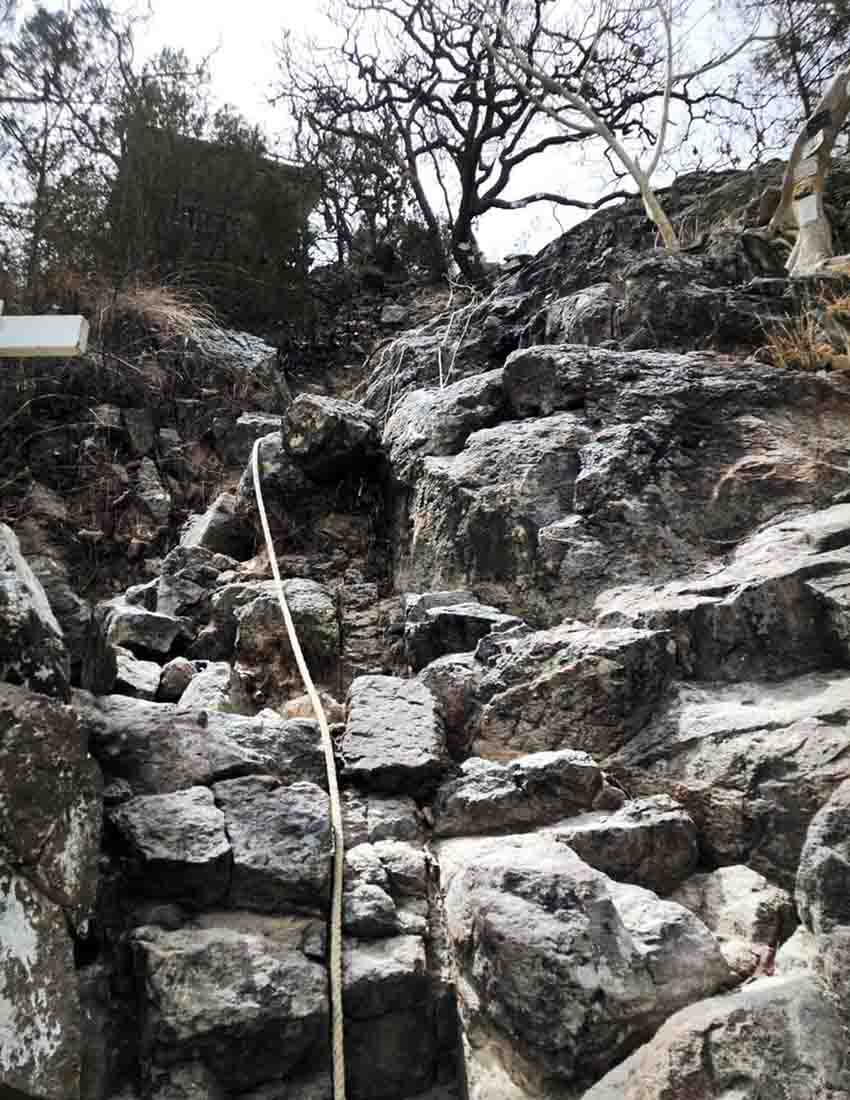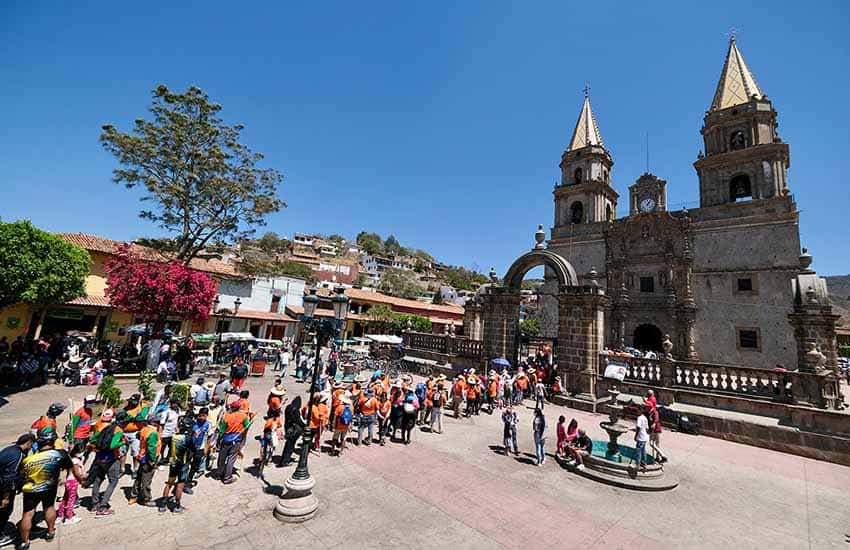If the small town of Talpa de Allende, Jalisco, is not in the middle of nowhere, it is just on the edge of it, hidden among the lonely hills of the Sierra Occidental, about two-thirds of the way from Guadalajara to Puerto Vallarta.
Nevertheless, three million people go out of their way to visit tiny Talpa every year and a great many of them do it on foot.
Most of these visitors are peregrinos (pilgrims), many who hope to receive a blessing or perhaps even a miracle from a statue about 30 centimeters tall known as the Virgen del Rosario (the virgin of the rosary).
This statue was brought to Talpa in 1585 by the indigenous Tarasco people. Made of cornstalk paste, the monument held up well until 1644, when, “worm-eaten, rotting, broken and disfigured,” it was about to be buried, as is the custom for disposing of these religious statues when their useful life has come to an end.
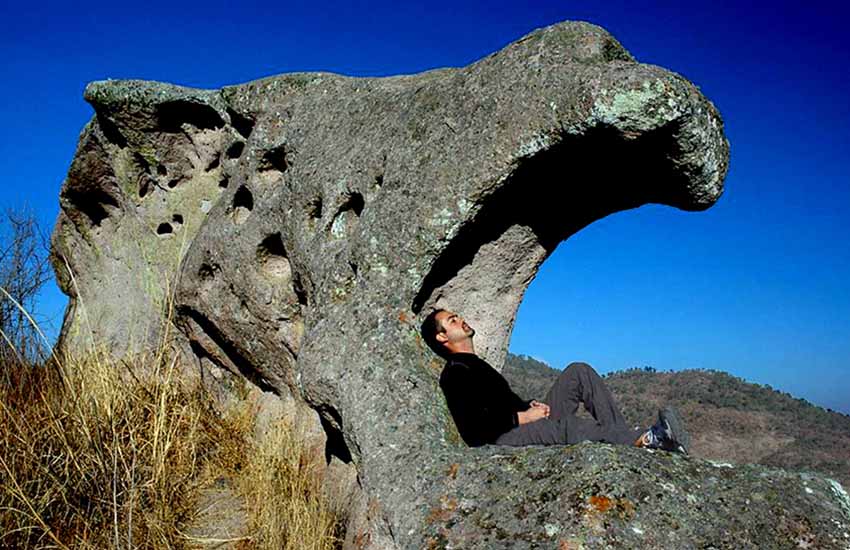
At that moment, though, says the legend, “a resplendent light burst forth from the image,” knocking out the “undertaker.” When calm was restored, it was discovered that the little Virgin, too, had been restored to her former beauty in the twinkling of an eye and the flash of a heavenly light. Ever since then, say devotees, the miracles have just kept coming.
Many who walk all or part of the pilgrims’ route are devoted to the virgencita, but many others are there simply for the camaraderie that inevitably develops among Mexicans away from home — or they simply would like to say, “I did it! I walked all the way!”
The most popular path by far to Talpa is the 117-kilometer trail that starts in the town of Ameca, located 70 km west of Guadalajara. This route has some long, flat stretches running through oak forests, pastures and scrublands but also includes two particularly steep mountains: El Cerro del Obispo (The bishop’s hill) and the aptly named Espinazo del Diablo (the devil’s backbone).
Pilgrim Lucy Quezada of Zapopan, Jalisco, gave me an idea of what these hills are like.
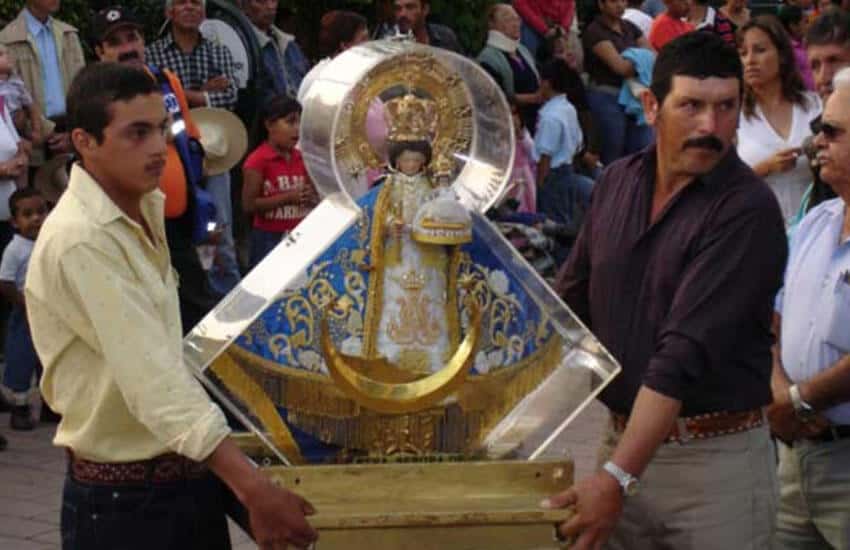
“The Cerro del Obispo is really rough and rocky. It’s up, up, up and up for 700 meters!” she says. “And all this time, the sun is beating down on you. And this is how it goes all day until, at sunset, you reach a little community where for 50 pesos you can sleep on a petate (traditional reed mat) under a little roof and cover yourself with a blanket. Then, the next morning you get up at 5 a.m. and start out again.”
To brighten up the hard journey, several Mexican architects got together and decided to create a variety of monumental constructions along the way, most of them in very remote spots where you would hardly expect to stumble upon works of art.
Perhaps the most striking of these is the Open Chapel of Gratitude by Mexican architect Tatiana Bilbao and Dellekamp Architects, located in Lagunillas, Jalisco.
It is said that this route has been the favorite of pilgrims for over 200 years, but for most of that time, the peregrinos had a rough time of it: eating little and sleeping on rocky ground. These hardships, however, were very much in keeping with the spirit of the pilgrimage: enduring pain and doing penance in the hopes of thereby gaining a spiritual reward.
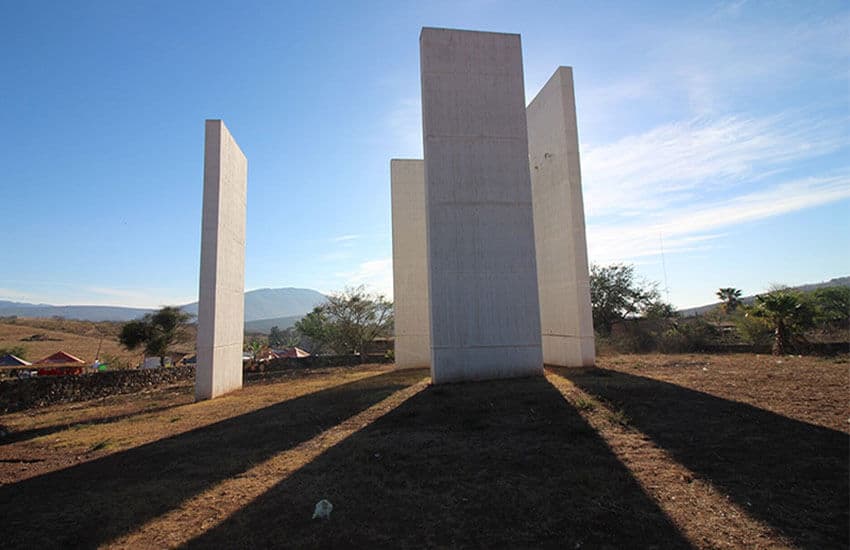
Recently, the Jalisco government stepped in to alleviate some of the problems that inevitably occur when crowds of people show up at the same spot out in the countryside. So, during peak periods, such as Holy Week, portable toilets now await the pilgrims at these waypoints as well as garafones (20-liter bottles) of water.
Once the weary pilgrims reach Talpa, they can get a good night’s sleep and nurse their blisters in one of hundreds of hotels offering accommodations for every imaginable price range.
What to do once you have visited the Virgin and rested up from the long, hard pilgrimage?
Here it should be noted that Talpa was recently added to the list of Mexico’s Pueblos Mágicos. Some of that magic can be appreciated simply by strolling down just about any street in town, because wherever you go in Talpa, you’re certain to find murals, very nice murals full of imagination and color.
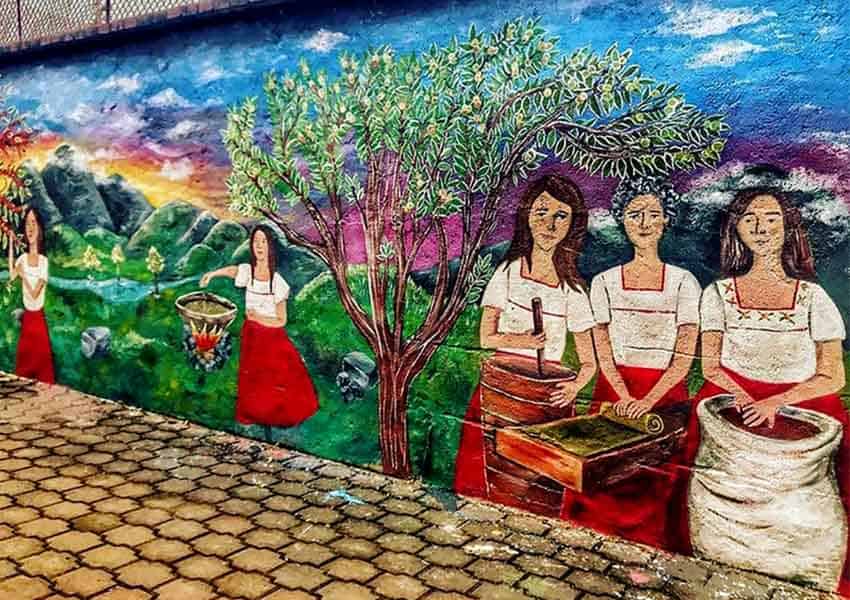
There are so many that, like me, you may end up calling this town Mural City, Jalisco.
While wandering the streets of Talpa, you will also find plenty of shops and stands selling curious little knick-knacks made of — would you believe it? — chewing gum.
This is the original chewing gum, of course — chicle or chilte, as the local people call it, made from the white sap that oozes out of diagonal cuts in the bark of a “bush” that can grow 10 meters tall. The sap is mixed with water and cooked a long time. Then, when it forms a rubbery sheet, it is kneaded and pounded again and again until it reaches the right consistency to be used for artistic purposes.
Yes, those little umbrellas, baby sandals, and even what look like flowers, are all made of chewing gum, unflavored and designed for pleasing the eye rather than the palate.

A short distance from Talpa, there are several outdoor sites well worth a visit:
The Bosque de Maples
This Maple Forest, located 20 kilometers south of Talpa, is an oddity and a marvel. Maple trees, which you’d expect to find in Canada, not Mexico, have been living side-by-side with giant ferns, tucked away in a little valley, happily surviving together since Pleistocene times.
A one-kilometer trail takes you on a hike well worth your while through this cloud forest shaded by lichen-covered maples, walnuts and firs, where you will cross moss-covered logs over little bubbling brooks. This particular species of maple (Acer binzayedii) is unique and found nowhere else in the world.
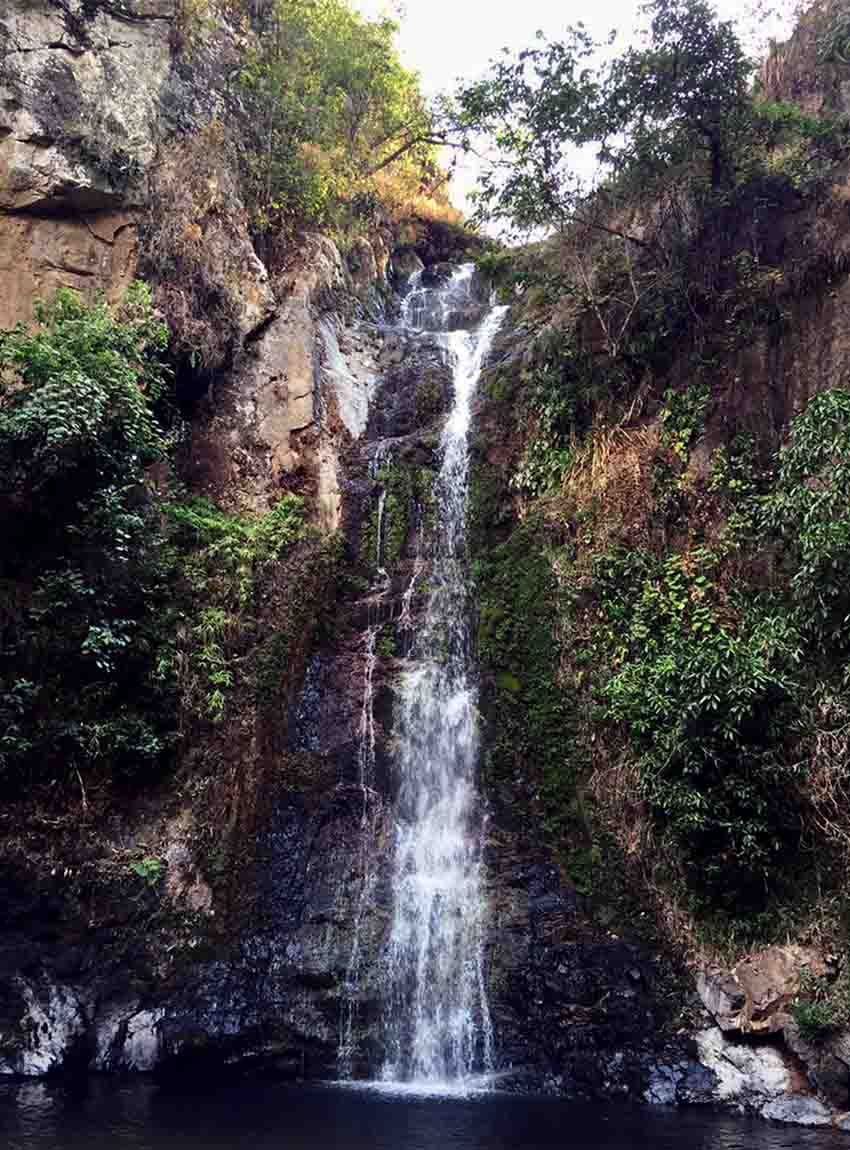
La Campana
This is a mini mountain 23 kilometers east of Talpa, immediately alongside the highway to Guadalajara. The walk to the top is only 400 meters, but you may have the sensation that you’ve just stepped onto another planet. You will see bizarre wave-like rock formations you’d swear were created by Salvador Dali or Antonio Gaudí. Enjoy!
The Cascade of Aranjuez
You will find this delightful waterfall 10 kilometers west of Talpa, and on a weekday you will probably be the only person enjoying it. The cascade is about 30 meters high and is named after a nearby silver mine. At the waterfall’s foot is a picturesque pool where you can swim to your heart’s content in cold, crystal-clear water.
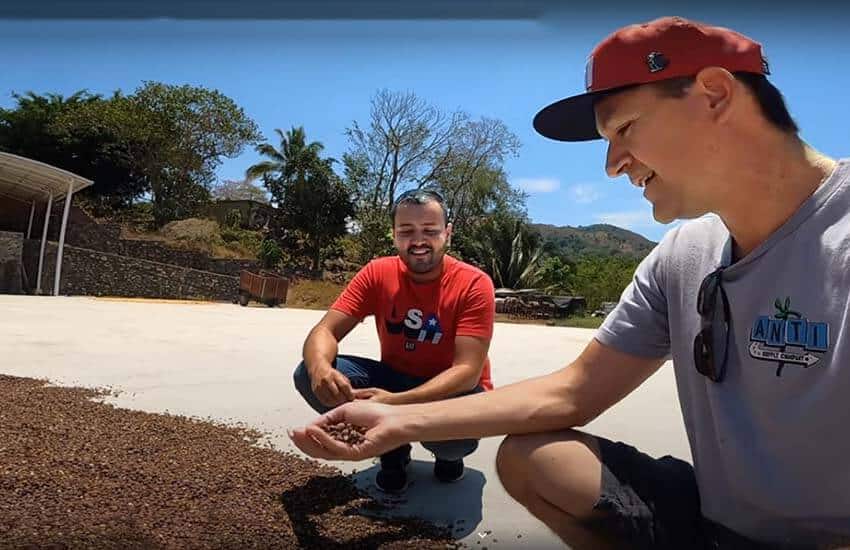
To reach the place, ask Google Maps to take you to Cascada de Aranjuez, El Tigre, Jalisco.
The drive to Talpa takes about three and a half hours from Guadalajara and four hours from Lake Chapala. For a more complete idea of what Talpa has to offer, you may want to watch Luigi Medina’s lively and colorful YouTube videos, which are in Spanish: Talpa 1 and Talpa 2.
The writer has lived near Guadalajara, Jalisco, since 1985. His most recent book is Outdoors in Western Mexico, Volume Three. More of his writing can be found on his blog.

